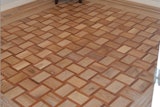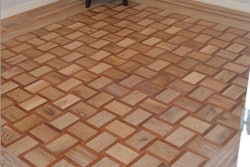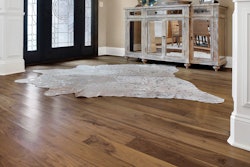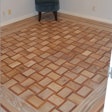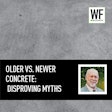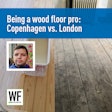Can the installation of a moisture vapor protection membrane prevent all moisture issues with a hardwood floor?
That is usually the second question I get; the first question is typically, "Can I install a moisture vapor protection membrane under both engineered and solid wood flooring?"
The answers are, "Yes, you can install systems below solid and/or engineered wood flooring" and "No, it does not prevent all moisture issues or problems."
Moisture protection membranes were initially developed to help protect more "economical" flooring adhesives from the adverse effects caused by substrate moisture migration and substrate alkalinity. The theory was that by applying a membrane over the concrete slab, you could protect the adhesive from being exposed to occasional or constant increases in moisture or problems associated with high alkalinity of the slab or substrate. In turn, the adhesive would not deteriorate and the installation would remain intact.
Over the past few years, the newer generation of moisture protection membranes have morphed into products that bring other benefits to the installation. In addition to protecting the adhesive, these products offer additional floor protection such as antimicrobial resistance and sound reduction.
Regardless of whether the membrane is considered old- or new-generation technology, you need to first understand why you are using a membrane. If you are primarily using a membrane to protect a low-end adhesive from deteriorating, which is a valid concern, then maybe you should consider using a higher-end adhesive. (The cost of a higher-end adhesive that does not need to be protected from moisture or alkalinity might be more economical than the cost of material and the additional time and labor associated with applying a membrane.) If you are using a membrane for reasons other than protecting the adhesive, or if you are using a membrane to protect the flooring or to add other benefits to your installation, then (in my opinion) you are on the right track.
Just like any product on the market, moisture membranes are available in a vast array of prices, levels of protection, features and benefits. Once you have decided to use a membrane, regardless of the type, keep in mind that the one thing they all have in common is that they only protect one side of the hardwood flooring material—the bottom side. Remember, membranes are simply barriers between the wood floor and the slab; they can only protect one of the six sides (top + bottom + 2 ends + 2 sides = 6 sides) of the wood flooring. Membranes do not change the "inherent characteristics" of the flooring material (stable/unstable species, solid/engineered, quarter/plain sawn); nor can they address any issues that occur from the sides, ends or top ("atmospheric") conditions of the job site; nor can they stop the seasonal changes that occur on the job site. In other words, the use of a membrane does not make a solid wood floor "act" as stable as an engineered wood floor.
Most people recognize that changes in temperature and moisture affect various wood species differently depending on their stability (or lack of), that changes in temperature and moisture affect engineered wood flooring to a lesser degree than solid wood flooring, and that changes in temperature and moisture affect quartersawn flooring less than plainsawn. Many people forget the importance of the "rate of change" in temperature and moisture; whether the changes are gradual or dramatic can very well play a role as to whether a problem occurs or not.
The reality is there are many jobsite factors affecting an installation that are outside the protection offered by a moisture vapor membrane installed below the floor. However, a properly installed membrane can prevent many of the moisture and alkalinity issues that come "from below" the floor, and it can slow down the rate of change as well, which in turn can help prevent a number of job-site issues.
As always, there are many products out there that can be used in a variety of ways; so prior to your installation, make sure to review the product information to determine the suitability of the products for your particular installation.










